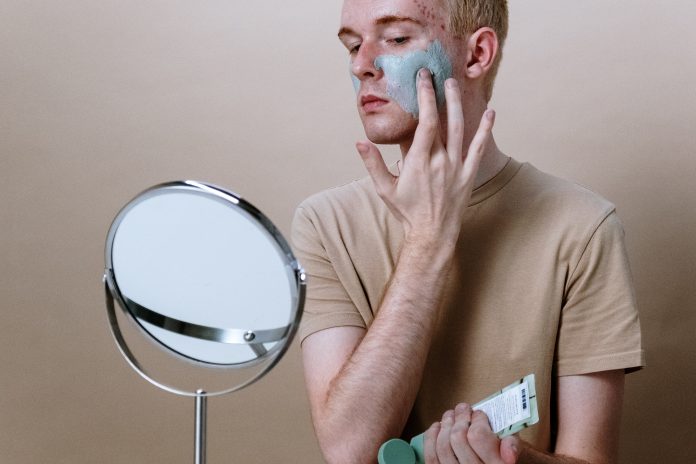Nobody likes waking up and seeing rough, scaly patches on their face. Not only can these patches be painful and irritating, but they can also be embarrassing. You may find yourself slathering more makeup on your face than normal as you try to conceal your spots. This can further irritate your skin, creating a seemingly never-ending cycle.
However, don’t be distressed! There are actions you can take today to start treating the rough patches of skin on your face. They may not disappear overnight, but you’ll be well on your way to dewy skin. Read on to get the full details.
1. Choose Products Wisely
When you see a rough spot, your first instinct may be to scrub it away. While it may feel good at first to rub your skin, it can cause further irritation. Some of the cleansers and soaps you use on a daily basis can be harsh on your delicate skin. Always be sure to look at the ingredient list, and avoid products that are full of unnecessary fragrances. Even if you’ve been using a product for a while, the formula may have changed, so it’s worth another detailed look.
If you aren’t sure where to start when it comes to your skincare routine, look to an expert. While it’s tempting to go with the routine that your favorite TikTok influencer recommends, it may not be best for your skin type. Do your research online for products that are non-toxic and non-comedogenic, meaning they won’t clog your pores. Look for products that promise to restore your skin’s natural oils.
Of course, not everything can be solved with over-the-counter solutions, and some skin concerns may require prescription medications. For example, melasma is known for causing rough patches on the face, patches that are often darker than your natural skin tone. It can be treated with topical prescription creams and gels. Patients experiencing this condition can send a photo of their skin to a virtual provider, who will make a recommendation. The prescription can be shipped to your door, so you can start feeling relief sooner rather than later.
2. Repair and Protect the Skin Barrier
Most everyone desires plump, moist, smooth skin. The secret to achieving this look starts with your skin barrier. Your skin is composed of multiple layers, and the skin barrier refers to the outermost layer. When the barrier is damaged, it will reflect on your skin’s appearance. In addition to dry, flaky, and rough spots, you may notice an overall dullness.
There are numerous causes of a damaged skin barrier. The first is sun damage. By now, you probably know the importance of wearing sunscreen and staying out of direct sunlight whenever possible. The sun can be brutal to your skin, breaking down the skin barrier with its intense UV rays. Another potential cause of damage, you might not know, is hot water. While a long, steamy shower may feel great, it can break down your skin’s natural oils. This can result in dryness, irritation, and a weakened ability to retain moisture.
Exfoliating is another cause of concern when it comes to your skin barrier. There is a time and a place for exfoliating, but it’s also easy to over exfoliate. It’s generally recommended to exfoliate no more than two to three times per week. And, of course, make sure you’re moisturizing your face with a skin barrier cream that will further protect your skin. These should be applied before your sunscreen as an extra protectant.
3. Eat and Drink Well
What’s happening on your skin often has a direct correlation to what’s happening in your body. Inflamed, irritated skin may be a sign that you need to cut back on processed foods high in sugar. While changing your diet won’t get rid of your dry spots overnight, it will help in the long term.
While fats sometimes get a bad rapt, research shows that there is no reason to be scared of some healthy fats. For your skin, healthy fats can contribute to a more supple skin barrier. Fatty fish like salmon and mackerel are good choices as they are high in omega-3 fatty acids. Other great choices include flax seeds, avocados, coconuts, and walnuts. Try to incorporate a few of these into your everyday diet for optimal skin results.
In addition to eating well, you also need to be mindful of what you’re drinking. Coffee may be your go-to beverage, but it could be dehydrating your skin. Alcohol is also known for causing dry skin and aggregating psoriasis. You don’t have to ban your beloved cup of joe or avoid a night out with friends, but be mindful of your beverage consumption. Drinking enough water per day will help ensure your skin is replenished and boost your skin’s radiance.
Takeaways
Having rough skin is, well… rough. Fortunately, there are plenty of ways to combat your skin woes. From what you put on your face to what you put on your plate, relief starts with your everyday choices. If your skin is struggling, take a look at your routine. Your skin may be screaming to change your habits for the better. It may take some time, but once you’ve found the right solution, your skin will thank you.

